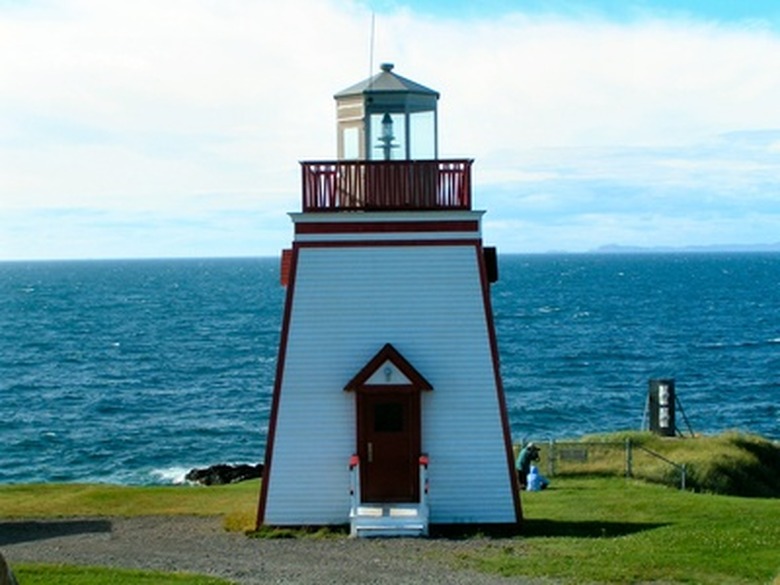DIY Solar Lighthouse Plans
Decorative lighthouses add character to gardens and properties but they require power for the light and for the moving beacon if the light rotates. For a large property, the lighthouse might be far away from a power source so that running extension cords out to the lighthouse may not be feasible. Operating the lighthouse on solar power solves this problem and represents an environmentally friendly solution. While solar-powered lighthouses are available commercially, it is easy to build one yourself.
Step 1
Build the lighthouse. Leave room for the battery in the base. Depending on the size, shape and design of the lighthouse, the solar panel can be installed on the side or on the roof. If the solar panel doesn't fit on the lighthouse, it doesn't suit the design or if the lighthouse is in a shady location, the solar panel can be installed separately on an angled base within about 20 feet.
Step 2
Install an LED light. The light must be 12 volt DC, and the power depends on the size of the lighthouse. A smaller lighthouse might have a 3 Watt LED light while a large one might need a 10 Watt LED. The LED must be mounted inside the glass or plastic enclosure at the top of the lighthouse.
Mount the LED so the beam points upward and mount a lucite, lexan or acrylic rod vertically above the light. Depending on the size and construction of the LED light, the rod could be glued to the light or supported separately. The diameter and length of the rod should match the LED light so that the beam is diffused in the rod.
Step 3
Install the solar panel. The panel must be rated 15 volt DC, and the power should be about three to four times the power of the LED. If the solar panel doesn't get much sunlight, it will have to have a higher power rating. If the power rating is too low, the LED light will go out at some point during the night.
Step 4
Wire up the solar panel to the battery and the battery to the LED. In this simple system, the LED is always on and the solar panel charges the battery during the day. At night, the battery powers the LED light and discharges. The size of the battery is large compared with the load, so there is little danger of overcharging. But the battery should be monitored for loss of electrolyte.
Things Needed
- Lighthouse construction materials
- LED light, 12 volt DC
- Rod of lucite, acrylic or lexan
- Solar panel, 15 volt DC
- Battery, marine deep discharge, 12 volt
TL;DR (Too Long; Didn't Read)
If the solar panel doesn't generate enough power, a light-sensitive switch can be installed to switch off the LED during the day. This will decrease power consumption.
References
Cite This Article
MLA
Markgraf, Bert. "DIY Solar Lighthouse Plans" sciencing.com, https://www.sciencing.com/diy-solar-lighthouse-plans-7726966/. 24 April 2017.
APA
Markgraf, Bert. (2017, April 24). DIY Solar Lighthouse Plans. sciencing.com. Retrieved from https://www.sciencing.com/diy-solar-lighthouse-plans-7726966/
Chicago
Markgraf, Bert. DIY Solar Lighthouse Plans last modified March 24, 2022. https://www.sciencing.com/diy-solar-lighthouse-plans-7726966/
